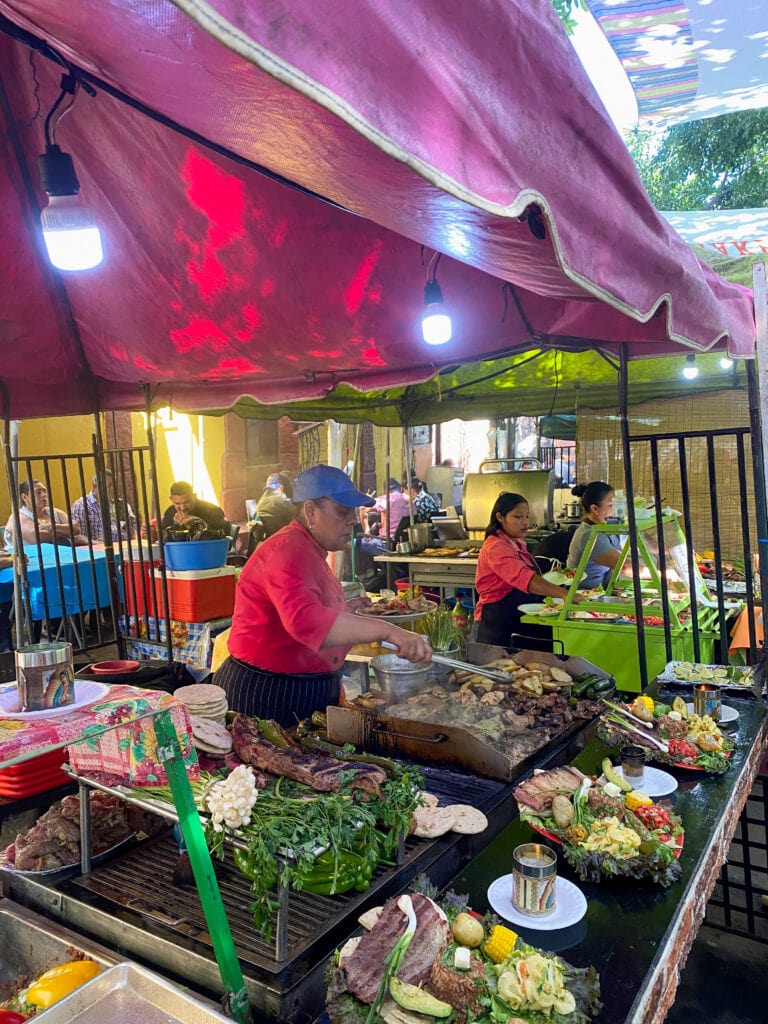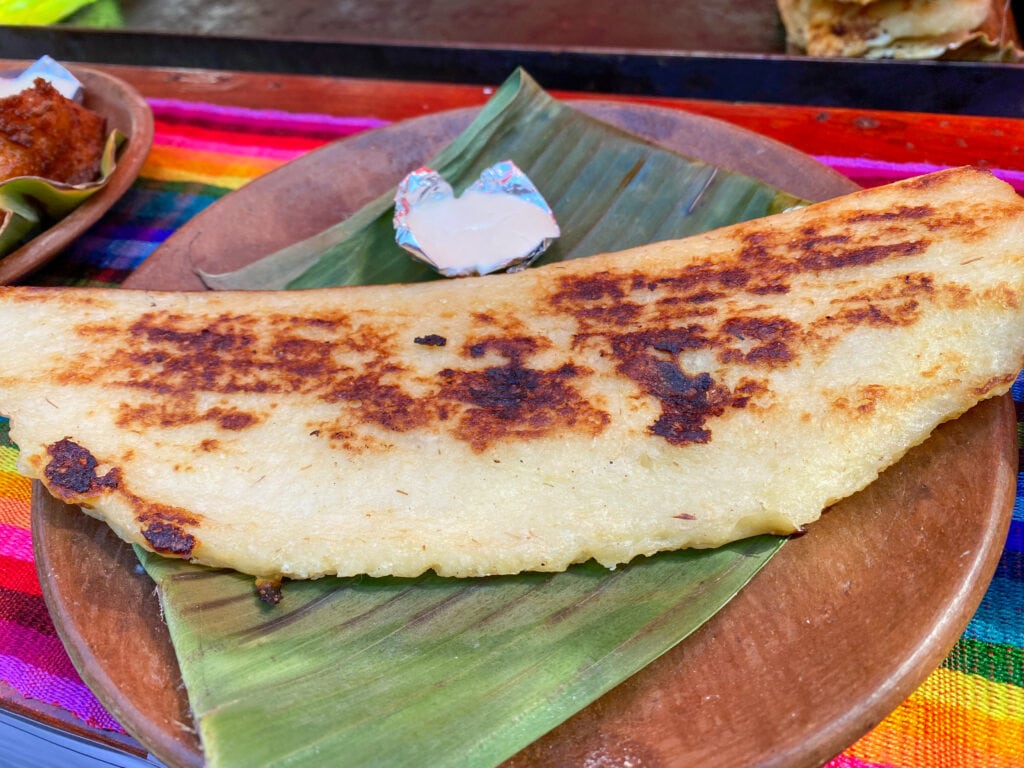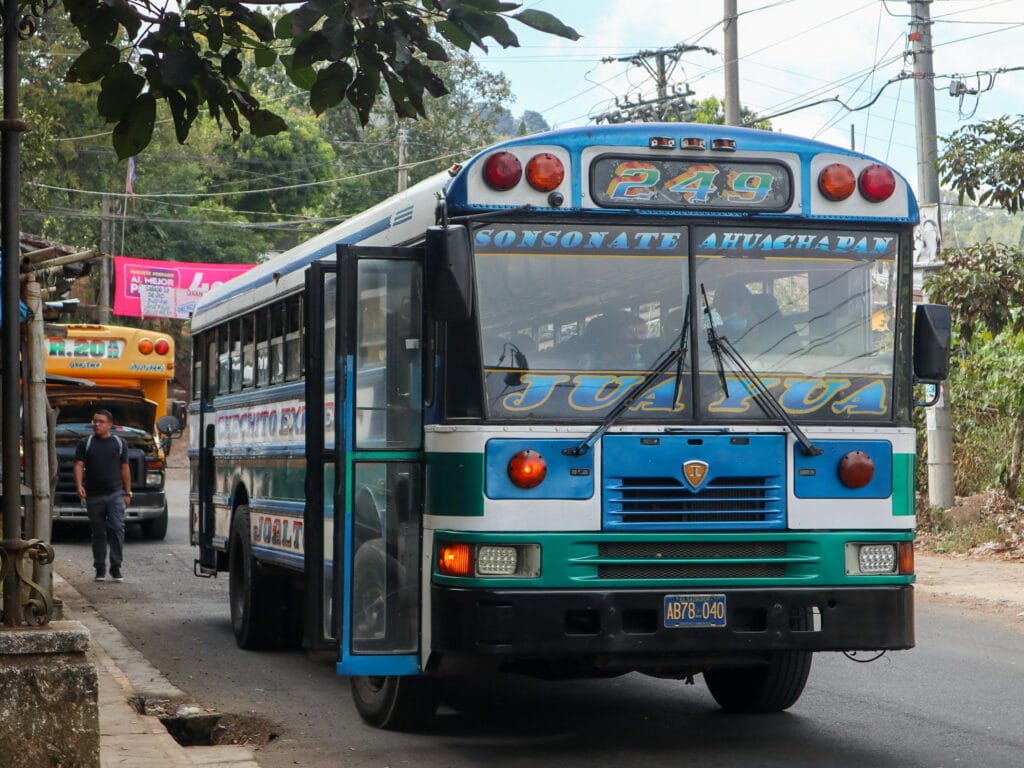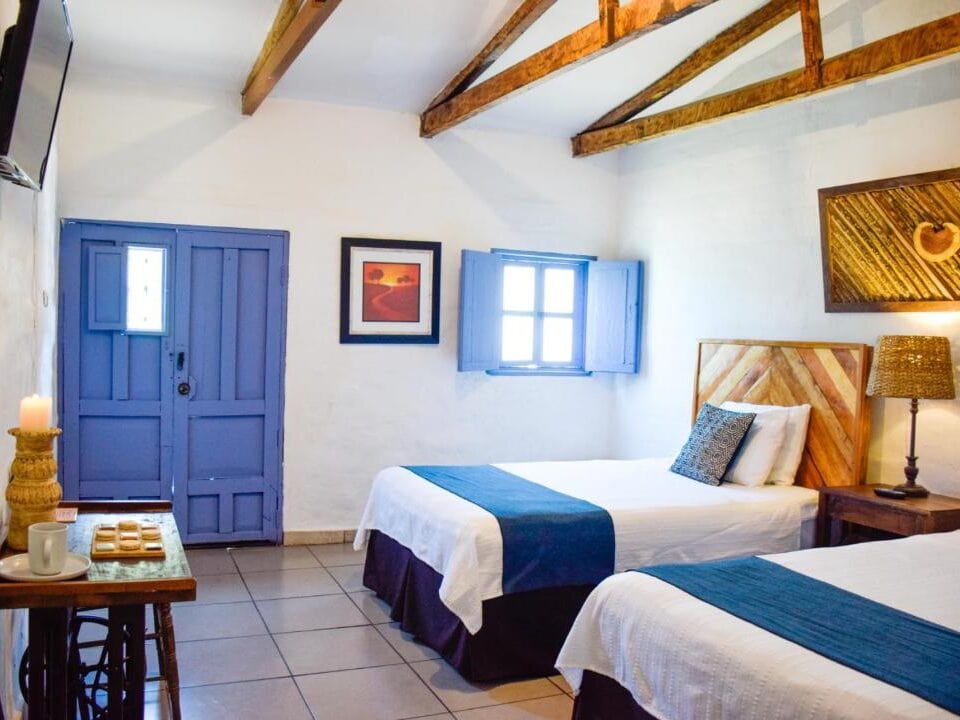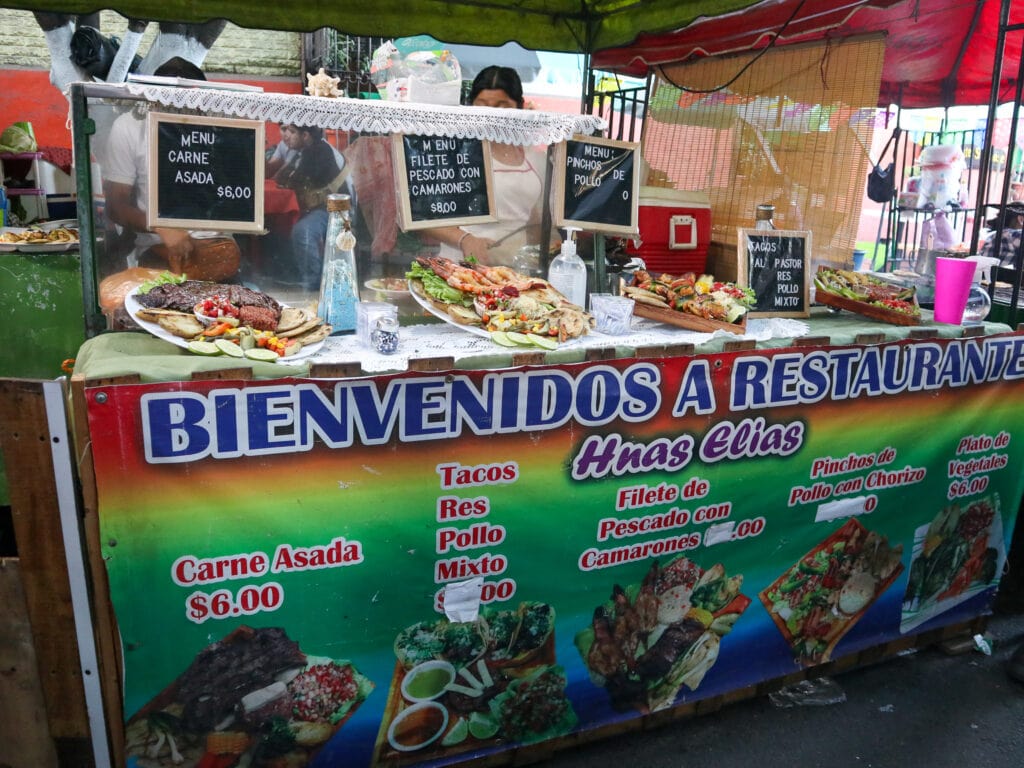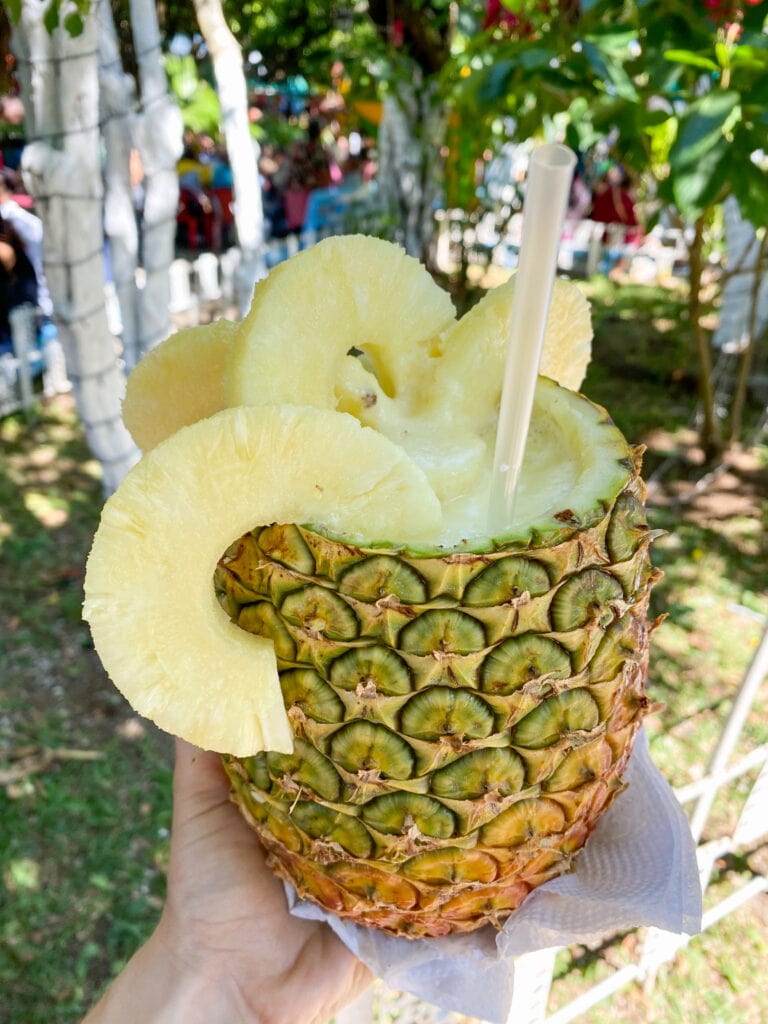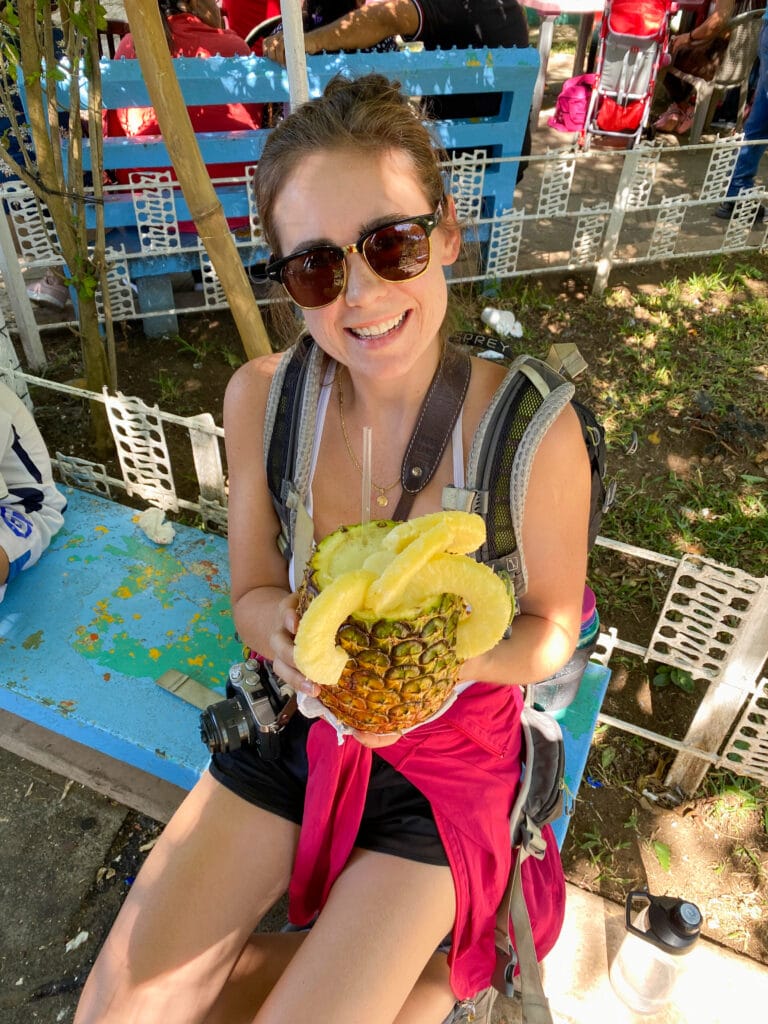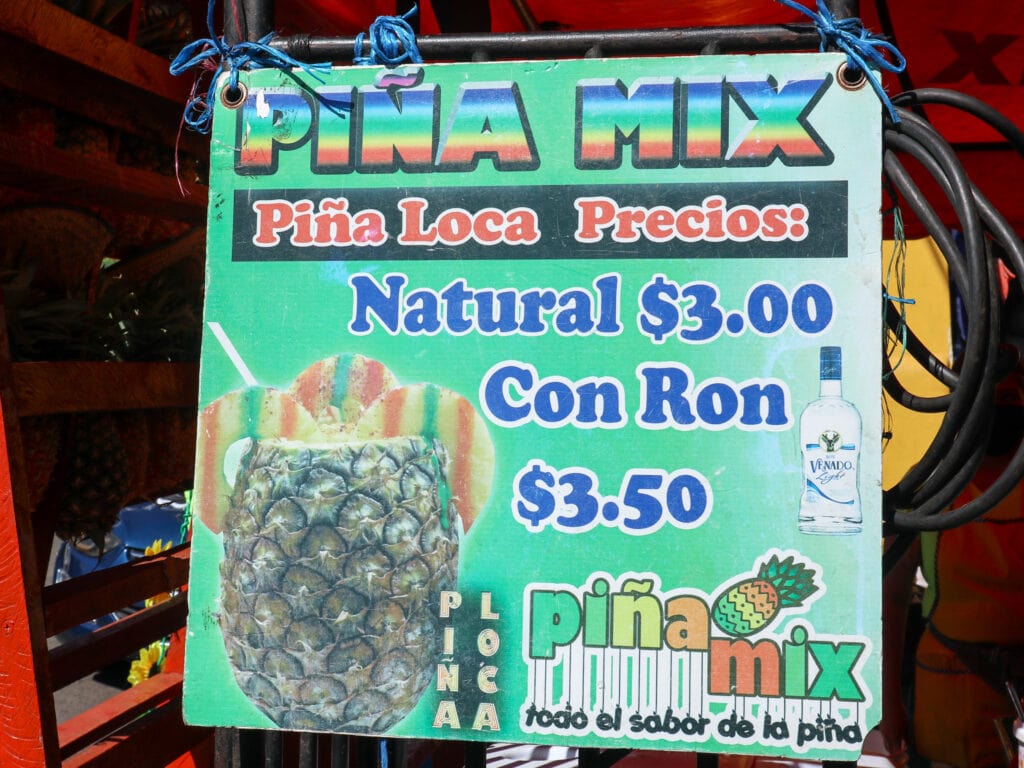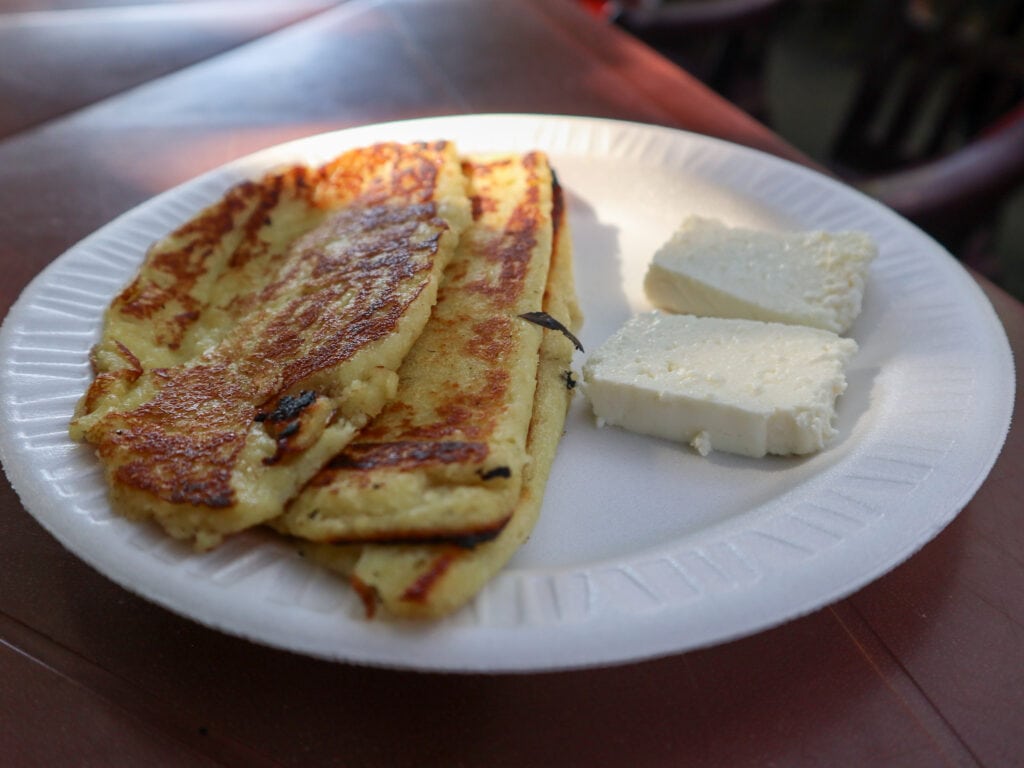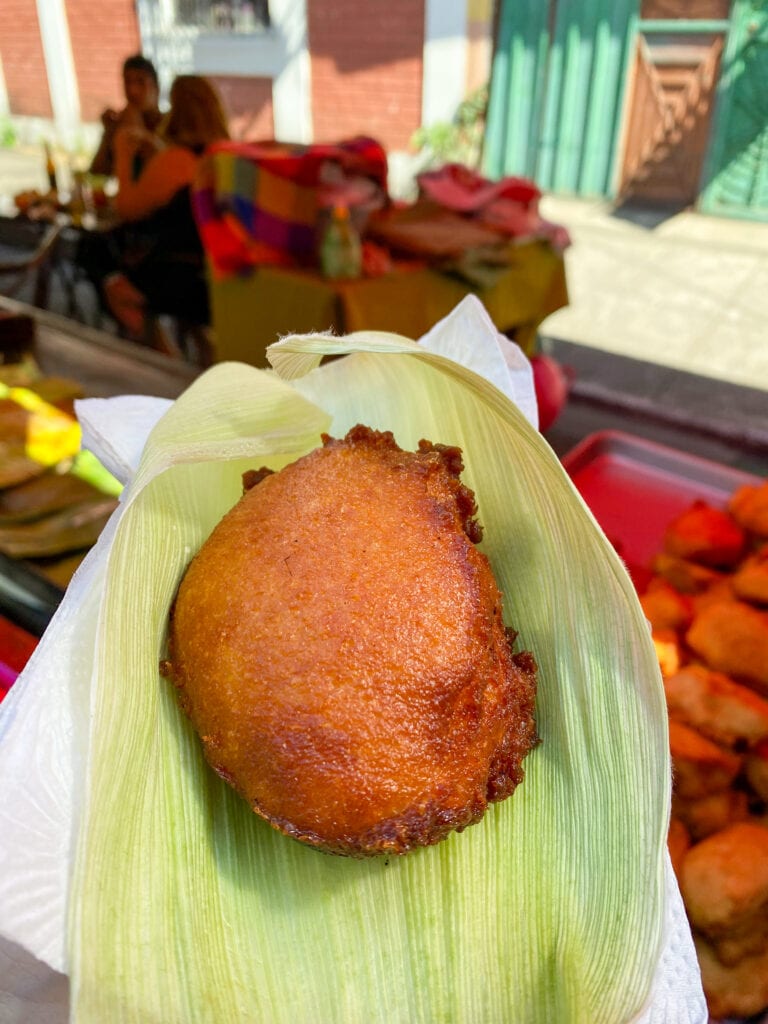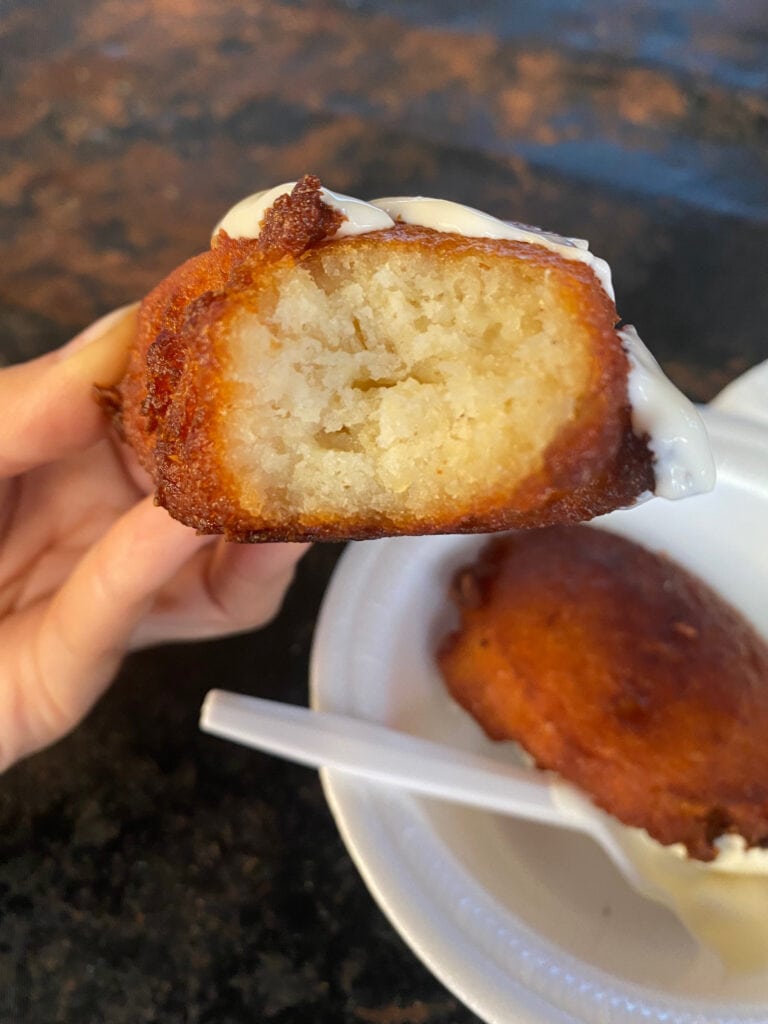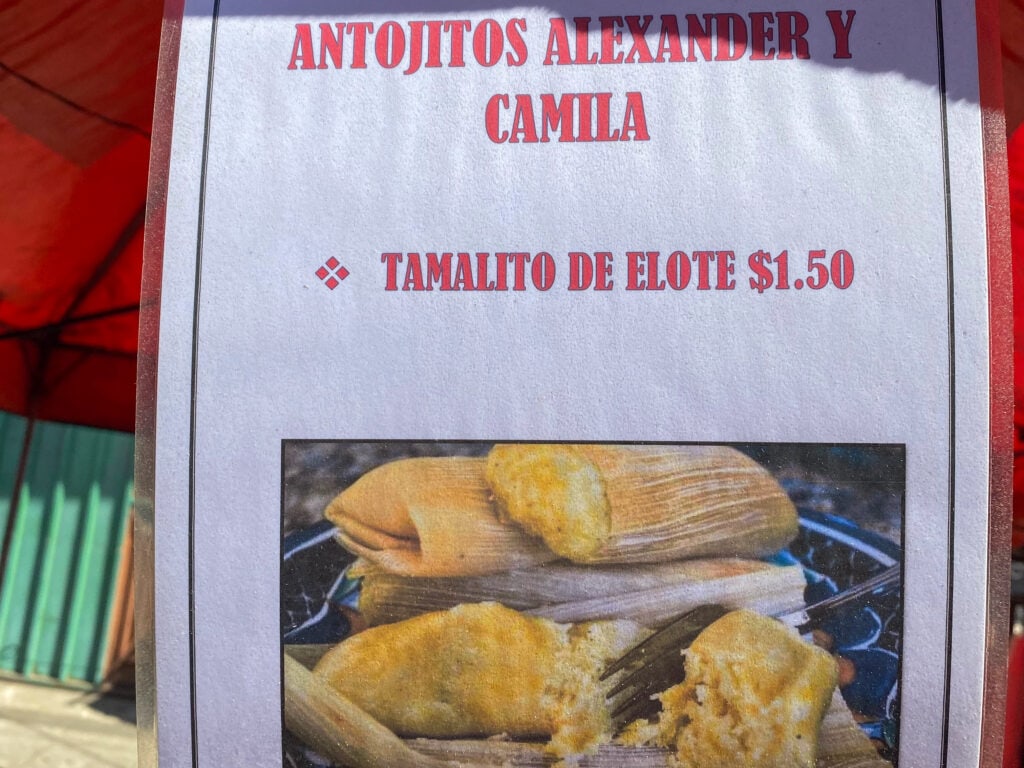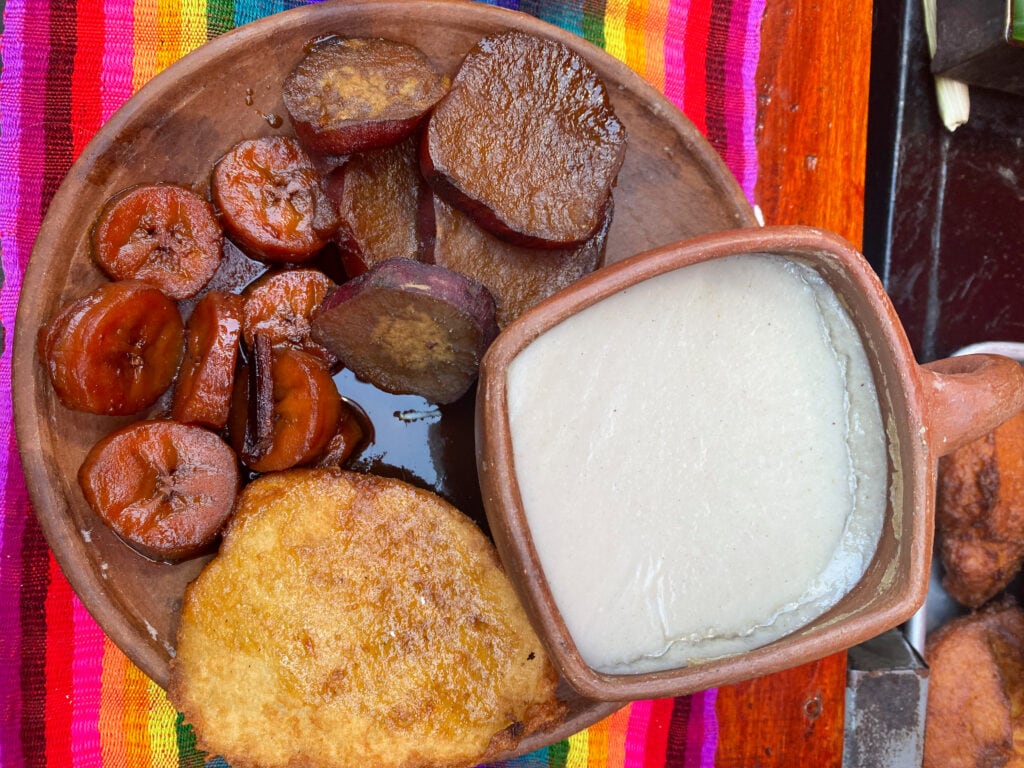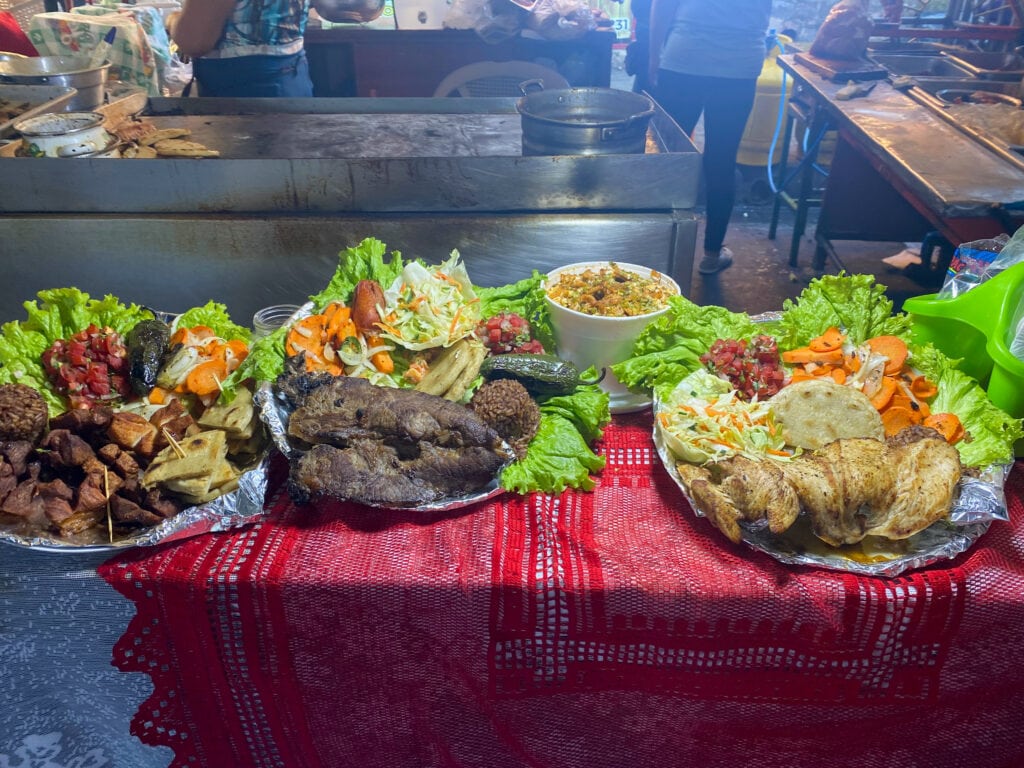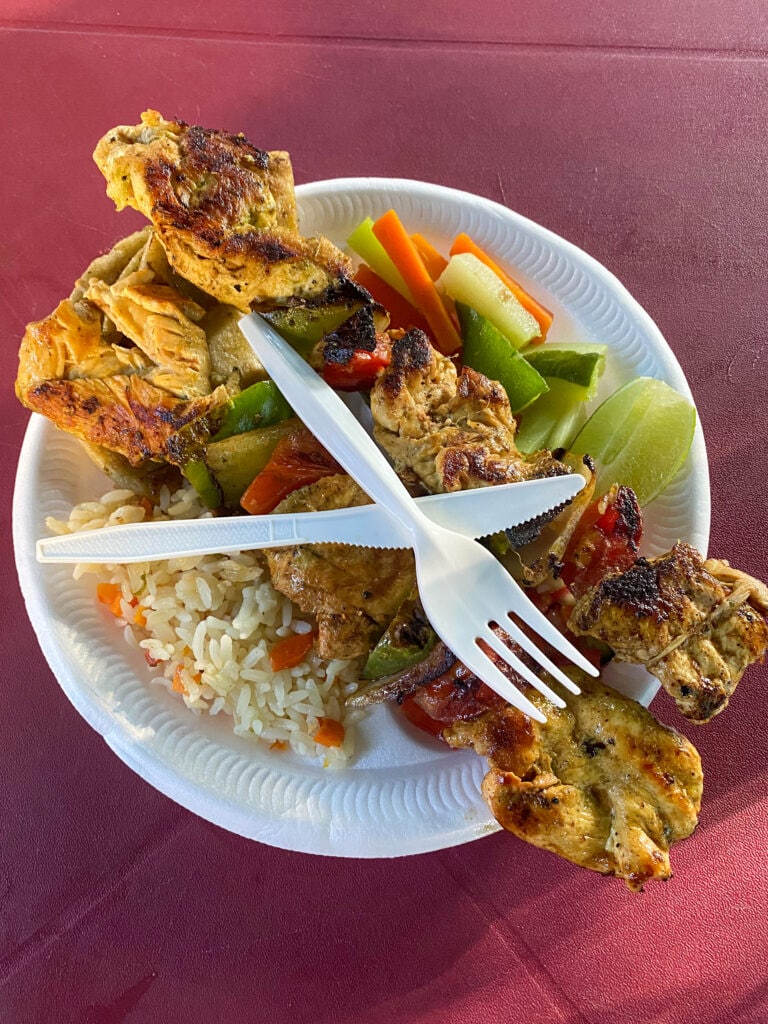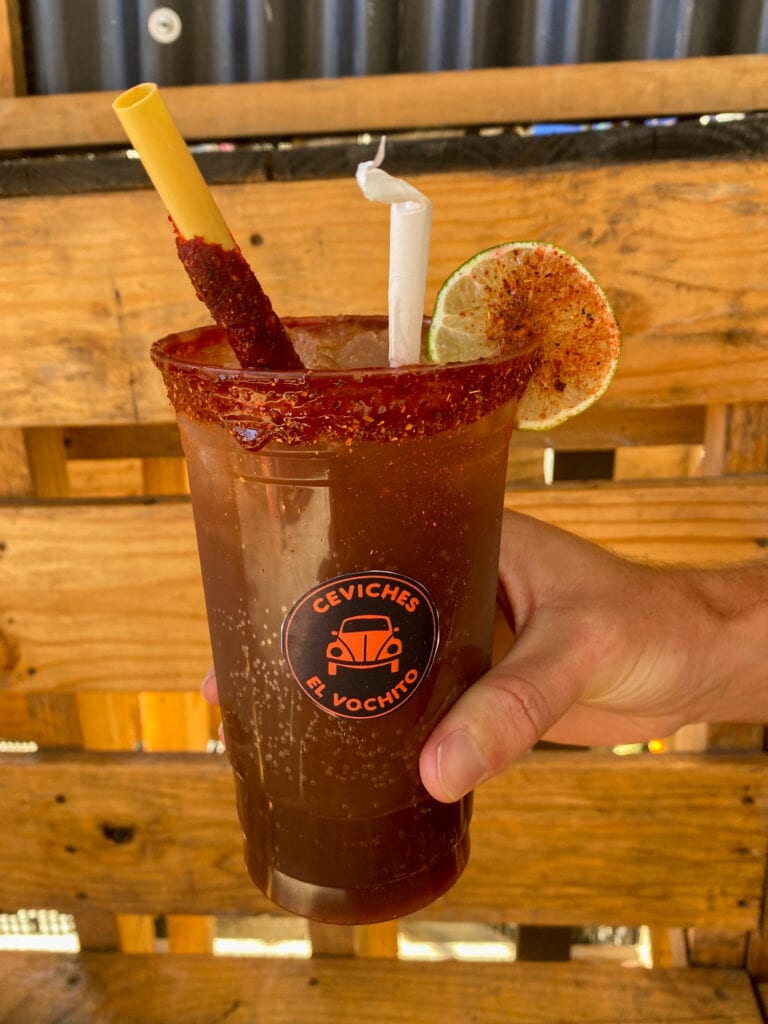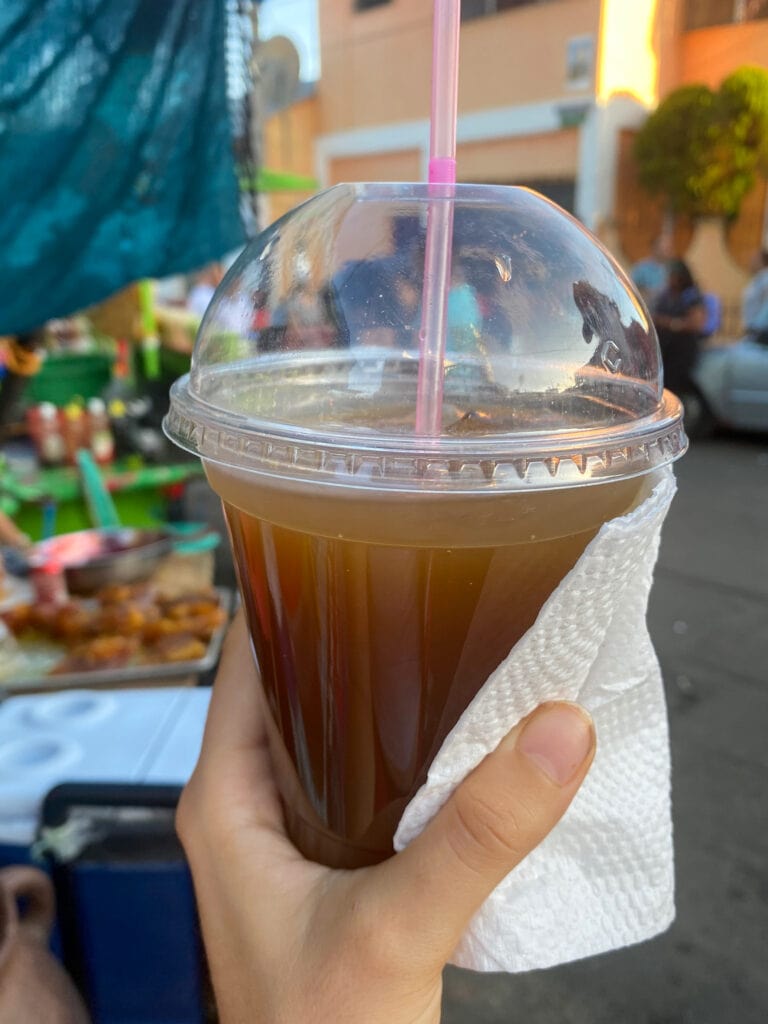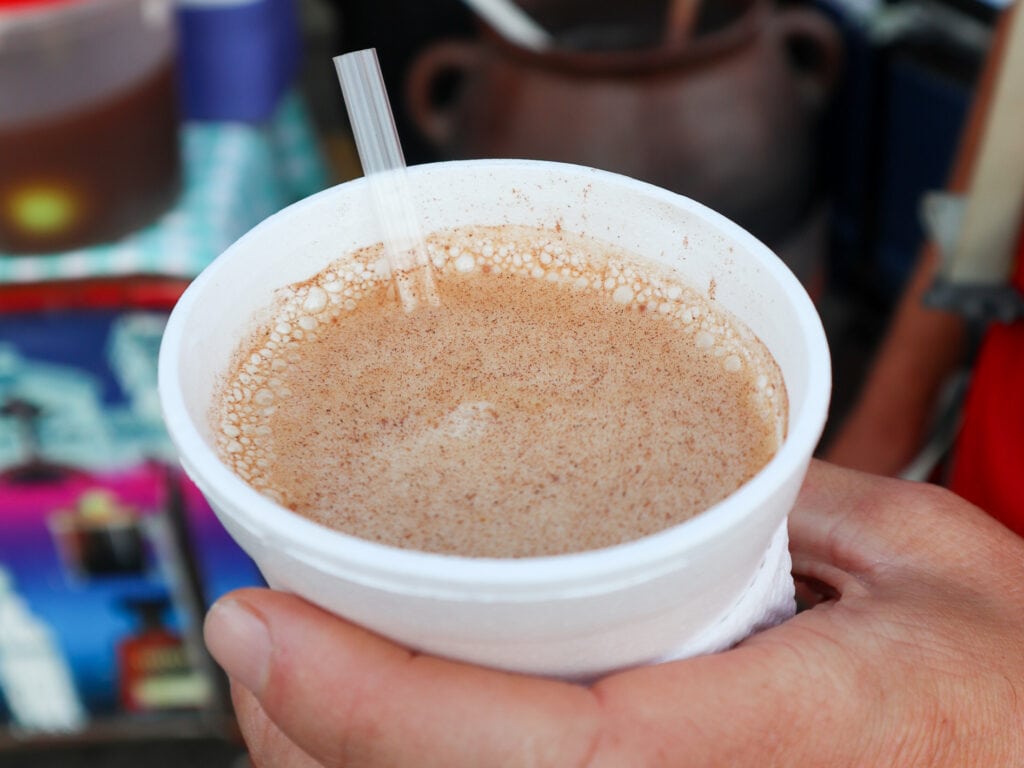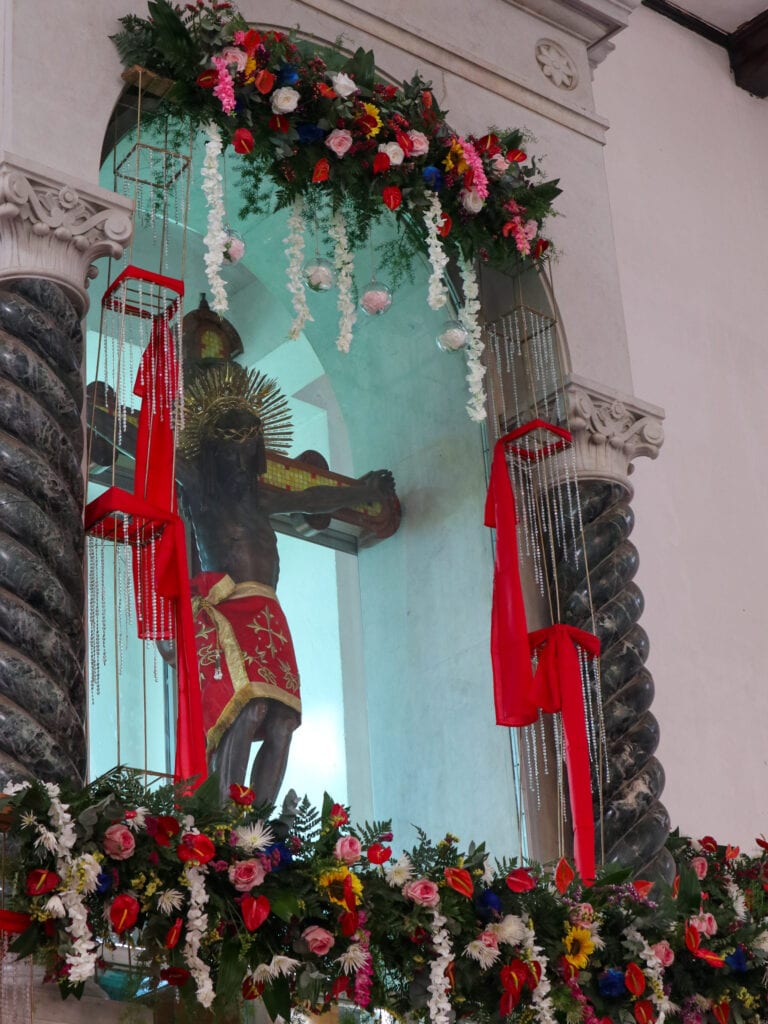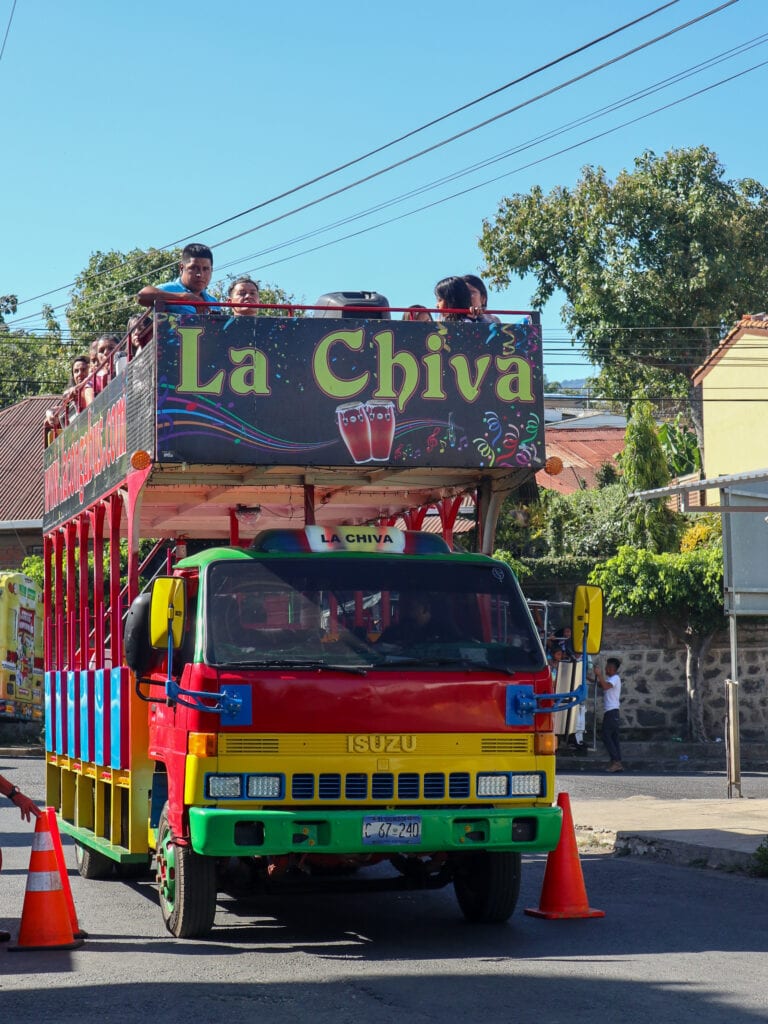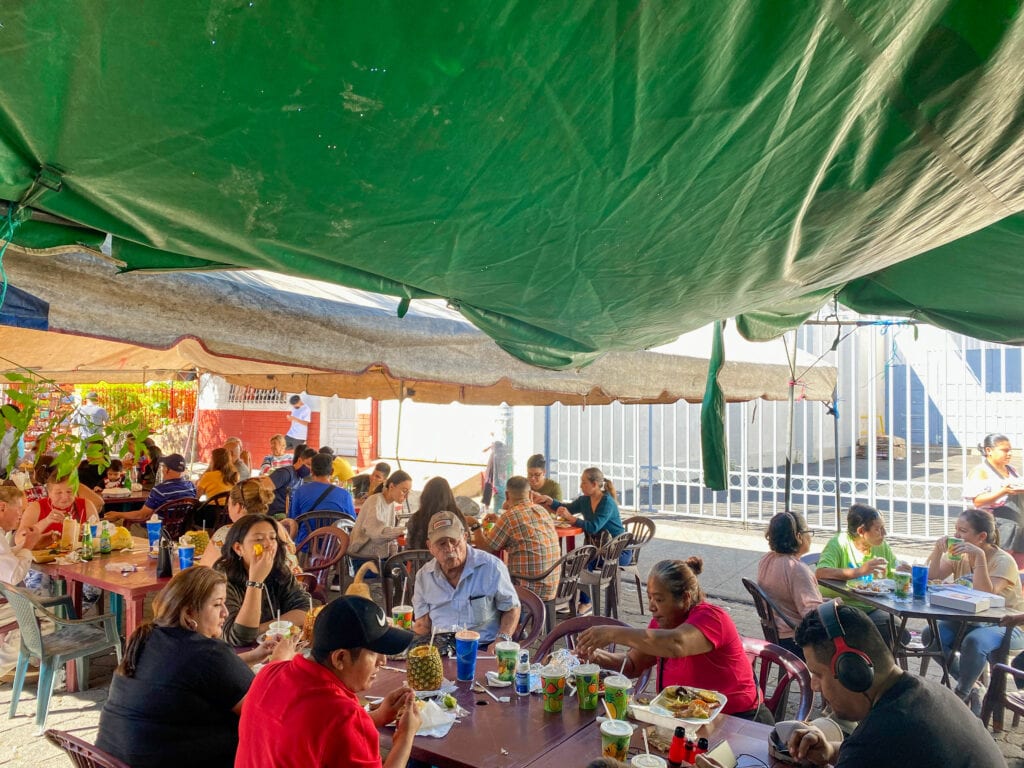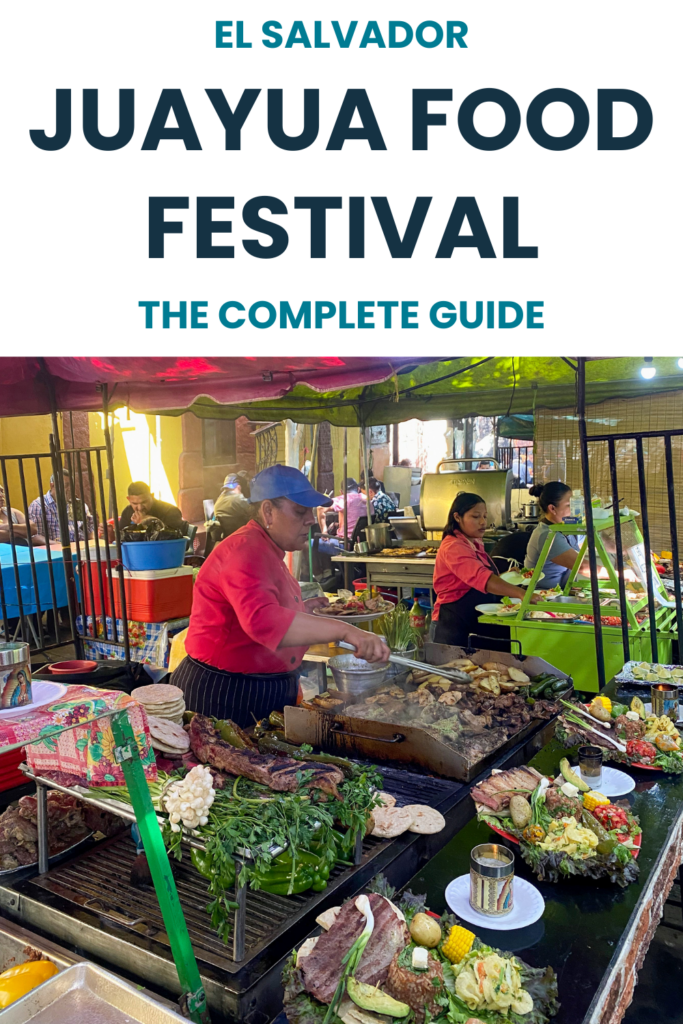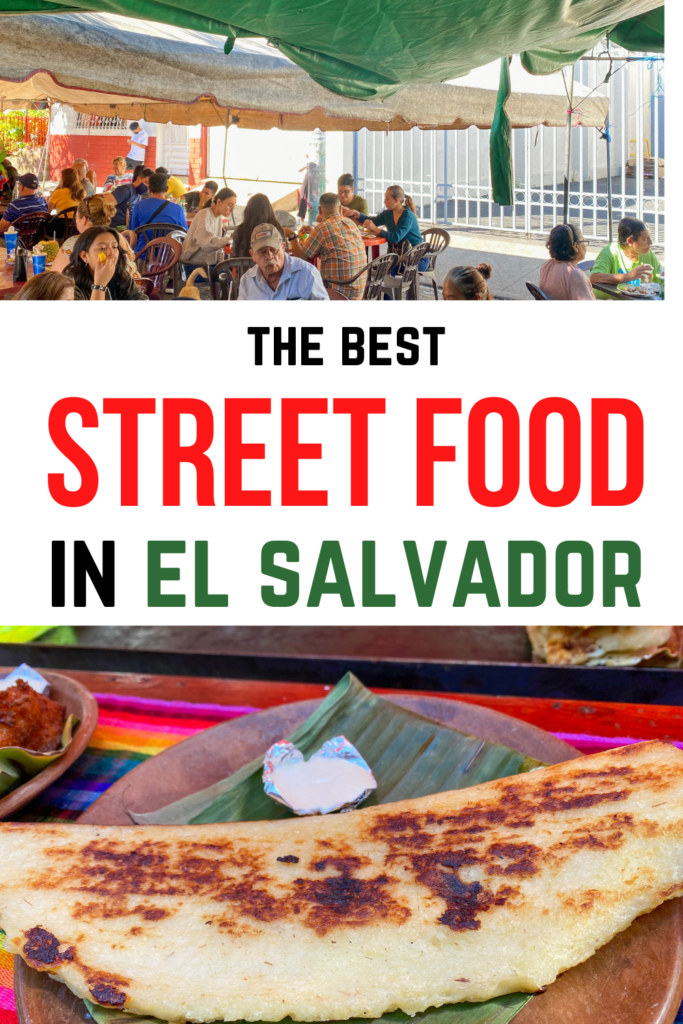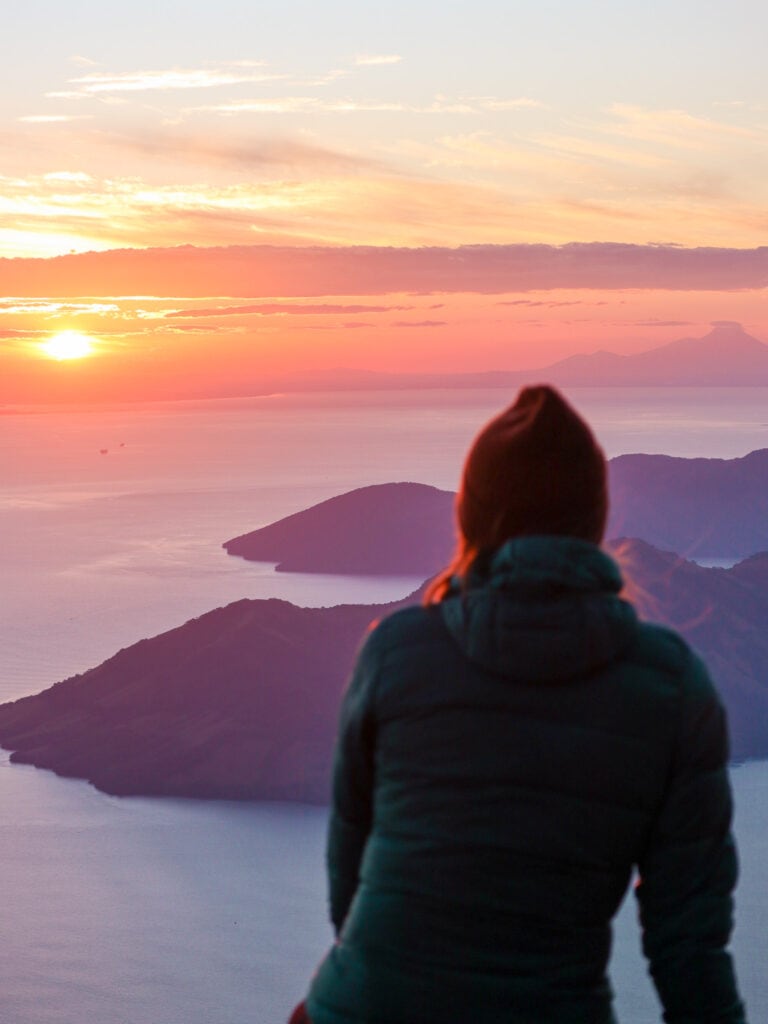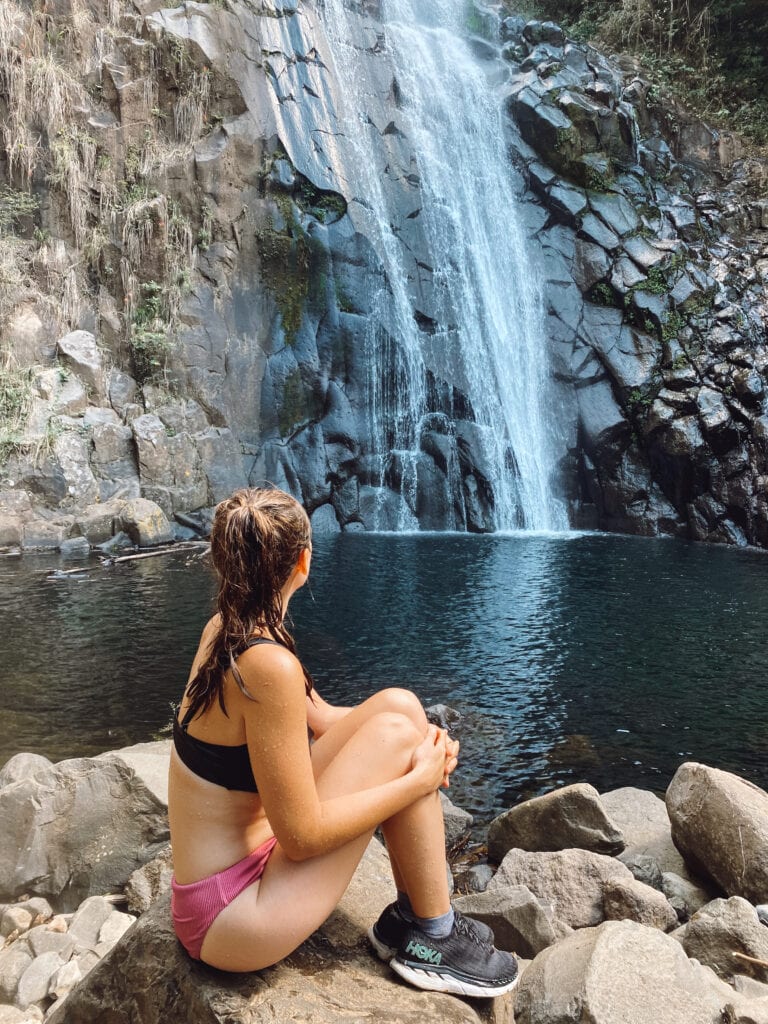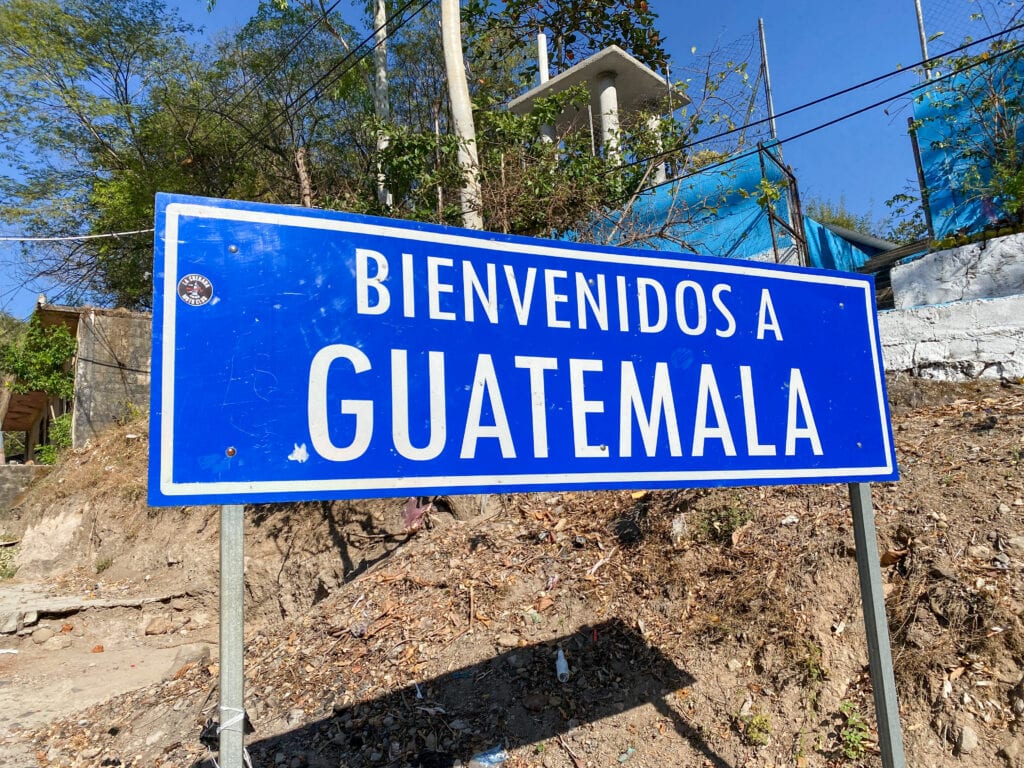Juayua Food Festival: Everything You Need to Know
Any foodie visiting El Salvador needs to go to the Juayua Food Festival. This famous street food festival (also called the Feria Gastronomica) happens every weekend in the small town of Juayua along the Ruta de las Flores.
Every Saturday and Sunday, the normally sleepy town turns into a bustling collection of tented food stalls, spilling out from the main plaza and along side streets. Here, I felt like a true traveler as I jostled amongst locals in packed lines, licked my fingers of sweet sticky maize, slurped fresh pineapple (out of a pineapple!), and in general ate until I couldn’t bear to anymore.
El Salvador has my favorite food in all of Central America, and the Juayua Food Festival is the perfect place to try out the local cuisine. But, there are a few things you need to know first. Consider this your essential guide to the Juayua Food Festival.
About the Juayua Food Festival
The Juayua Food Festival happens every Saturday and Sunday of the year, in the town of Juayua along El Salvador’s Ruta de las Flores.
You can find it in the central plaza (located here), or just by following the smells of garlic, charcoal grilled meat, and sizzling corn.
Read on for detailed information on hours, prices, available foods, how to get to Juayua, where to stay, and more.
Juayua Food Festival Hours
The Juayua Food Festival hours are a little bit tricky, because like a lot of things in Latin America they are not set in stone.
From my experience, and in speaking to locals, the food festival generally runs from 11am-5pm on Saturdays and Sundays. You can be assured that by 5pm, many stalls will be packing up if they haven’t already.
We visited on January 15, which is the huge Christo Negro celebration that happens every year in Juayua. Even on that big holiday, many stalls packed up by 5pm. So, definitely plan for having a big lunch rather than dinner at the Juayua Food Festival.
We wandered the food festival from about 12pm-5pm. That is longer than you need, but was really nice and leisurely and we had time to explore the town (and to get second helpings from our favorite food stalls!).
How to Get There
To attend the Juayua Food Festival, you first have to get to Juayua! Below are the directions from some of El Salvador’s most popular locations.
From El Tunco
This is the journey that we did personally. It’s a long morning on chicken buses but not too bad!
- Take chicken bus 287 from El Tunco to Sonsonate. It departs twice a day every day (including Sundays) at 6:30am and 1:30pm. Get to the highway early as the bus can run early or late. This location pin is where you should wait for the bus. $1.50, 2.5 hours.
- Once at Sonsonate, take bus 249 in the direction of Ahuachapan, and get off at Juayua. This bus runs frequently. $.40-.80, 40 minutes.
From Santa Ana
The city of Santa Ana is only about an hour from Juayua, although it takes a bit longer on the chicken bus.
- Take chicken bus 238 straight to Juayua. It departs approximately every two hours. $.80, 1.5 hours.
From San Salvador
If you’re in the capital city, take the route below to reach Juayua.
- Take chicken bus 205 from the Terminal de Buses de Occidente to Sonsonate. $1.50, 2.5 hours.
- Once in Sonsonate, take bus 249 in the direction of Ahuachapan and get off at Juayua. This bus runs frequently. $.40-.80, 40 minutes.
From the Ruta de las Flores
Already in the Ruta de las Flores? No sweat. It’s easy to get around the flower route with the bus below.
- Take bus 249 from anywhere along the Ruta de las Flores, in the direction of Sonsonate. Get off at Juayua. $.40-.80.
Where to Stay
I absolutely recommend making the Juayua Food Festival part of a longer trip to the beautiful Ruta de las Flores (the flower route).
The Ruta de las Flores is a flower-lined road connecting some very quaint villages, many famous for their coffee farms and activities. The towns along the Ruta de las Flores include Juayua, Nahuizalco, Salcoatitán, Apaneca, and Ataco.
I’d only recommend staying in Juayua or Ataco because this is where the best restaurants, hotels, and activities are.
Where to Stay in Juayua
You don’t have to travel far if you stay overnight in Juayua after the food festival!
- Hostal Carolinas ($): This is a basic but good option for budget travelers. It’s well located and rooms start from $15 for a private double room.
- Bourbon Hostel ($$): A modern, boujie hostel experience. Bourbon Hostel is perfectly located between the bus stop and the plaza where the food festival is held. The staff here can also help you organize the Seven Waterfalls Hike, which requires a guide. Side note: the coffee looks amazing here.
- Hotel Juayua ($$$): If you’re looking for a more upscale option with its own pool and truly breathtaking views of the surrounding volcanoes, then Hotel Juayua is the one for you!
Where to Stay in Ataco
We stayed at this hotel in Ataco and I would do it a million times over. As much as I loved the Juayua Food Festival, I think Ataco is a cuter town with generally more going on (especially during the week).
- Hotel Casa Pino ($-$$): This is where we stayed and I LOVED it. They are super cute, clean, mini-apartments complete with small kitchens and desks. It was perfect for our needs and one of my favorite places we’ve stayed in Latin America. Highly recommend staying at Casa Pino in Ataco!
- Las Casitas Hostel ($-$$): Ataco is generally more expensive than elsewhere in El Salvador, but Las Casitas is a good option for travelers on a budget.
- Casa 1800 Boutique Hotel ($$-$$$): One of the nicest boutique hotels along the Ruta de las Flores, but still relatively affordable.
Note: If you’re not staying in Juayua for the night, then you need to consider how you’ll get home. The last bus 249 leaves Juayua at 6:10pm. If you want to stay later, call a taxi. The taxi driver our hotel recommended is Rolando Ayala (+503 72022973). He has competitive prices.
How Much Should You Budget for the Juayua Food Festival?
The Juayua Food Festival feels both cheap and expensive at the same time. Let me explain…
Because the food festival is geared toward locals and not tourists, it is on the whole pretty affordable. Especially compared to what you would spend in a tourist-driven cafe or restaurant.
However, when you compare the prices to pupuserias and most other local food options, it’s comparatively expensive.
In general, you can expect to spend about $6 on a main course platter which includes meat, vegetables, rice, and a tortilla.
Smaller snacks cost $1.50-2.50. And special drinks range from $3-4.
Dan and I shared quite a few dishes, which helped cut down on costs and also meant we had room in our stomachs to try more food. In total, we spent about $17 for the two of us.
To put it in context, we were accustomed to spending 50 cents on pupusas so the price tags at the Juayua Food Festival gave us sticker shock. Of course, that sounds crazy to me now just writing it, but you do quickly get used to the low, low prices elsewhere in El Salvador!
What to Eat (and Drink) at the Juayua Food Festival
Now to the fun part… the food!
I was in absolute foodie heaven wandering through the food festival for hours with Dan. I think we did about twelve laps, haha. You should definitely take the time to explore, too.
But, you came here to learn about the Juayua Food Festival, and I wouldn’t be doing my job if I didn’t share my favorite food finds with you! There are other foods that I don’t mention below (that you’ll have to discover for yourselves), but these were our favorites.
Piña Loca
Our first stop (and seemingly everyone else’s too) was the “piña loca” (crazy pineapple) stand located on the side of the plaza closest to the church. It’s easy to recognize as it’s colorful, has a looong line, and has a wall entirely covered in pineapples!
First, they cored the pineapple with a snazzy device. Then, the pineapple innards were chopped, and blended up with ice into a thick, juicy, creamy consistency. This was then poured back into the pineapple, and topped off with any desired sauce drizzles.
I paid $3 for mine, but for an extra 50 cents, you could add Flor de Caña rum if you so chose. It was delicious and what a way to start the day!
Cost: $3-3.50
Rigua
I tried my first (and second… and fourth…) ever riguas at the Juayua Food Festival and a mighty food obsession was awakened!
A rigua is a traditional Salvadorean food that is basically a small half moon-shaped pancake made of fresh corn, griddled inside a banana leaf. It’s served piping hot with a side of queso fresco or cream. The taste is sweet, salty, tender, buttery, and ohhh so good (and yes, they’re gluten free!).
You can find riguas at a few different stalls. My favorites were at a stall located on the side near the pineapple stand.
Cost: $2 for 3
Tortitas de Elote
Tortitas de elote are another traditional Salvadorean food I discovered at the Juayua Food Festival and promptly became obsessed with. I actually had two of these around 1pm, and then again at 5pm before we left!
They are made of corn flour, along with sugar and butter. The dough is then plopped into a deep fryer and it comes out like a kind of dense, sweet, corn-based doughnut ball! Absolutely delicious (and the hotter, the better).
I only found tortitas de elote at one stall, called Antojitos Alexander y Camila, located in the section off the main plaza on the northeast side (1 Avenida Nte.).
Cost: $1.50 for 2
Tamalito de Elote
The Antojitos Alexander y Camila stall also sold a dish called tamalito de elote. This is a kind of sweet corn tamale, made with fresh corn kernels. I didn’t try it myself, but it looked really good!
Cost: $1.50
Chilate
Chilate is a popular hot drink from El Salvador. To me, it looks more like a porridge than a drink, though. It is basically hot water thickened with corn flour and flavored with ginger, allspice, and sugar.
We saw chilate served at the Antojitos Alexander y Camila stall, alongside some syrupy-soaked sides of sliced plantains and sweet potatoes.
Cost: $3+
Grilled Meat Platter
After filling up on “antojitos” (side dishes or snacks), it’s time for the main course. The majority of the Juayua Food Festival is made up of vendors selling big platters of various grilled meats.
You can wander along all sides of the main plaza and peruse what’s on offer. Most of the platters include a meat (beef, pork, chicken, but also sometimes rabbit) grilled with garlic and salt and served alongside rice, tortillas, sauteed vegetables, and boiled yucca.
There are also a lot of vendors selling grilled seafood – mostly in the form of massive shrimp.
Some stalls batter and fry the meat, and some serve pastas as a side dish, so be careful if you are gluten free like me.
Cost: $6
Kebabs
When we visited the Juayua Food Festival, we opted for a grilled chicken kebab platter over one of the traditional meat platters.
In all honesty, I’d filled myself up on corn-based antojitos (and knew I wanted more of them) so we preferred a lighter main course. It was still absolutely delicious and the meat was charcoal grilled to perfection.
Cost: $6
Michelada
You can’t walk three steps at the Juayua Food Festival without seeing a michelada, and if you’ve never tried one before then this is your chance!
A michelada is an originally Mexican cocktail, made from beer, lime, chili, spices, and usually a flavored juice of your choosing (we saw mango, tamarind, lemon, and more on offer). Of course it’s not gluten free so I couldn’t try it, but Dan took one for the team here 😉
We actually walked slightly outside the main plaza to a small, cute open air bar called Ceviches el Vochito, where Dan got his michelada. There are tons of stands inside the food festival that sell micheladas, too. They are super loud and blasting music so you really can’t miss them.
Cost: $4
Chicha
Another beverage that you’ll see everywhere at the Juayua Food Festival is called chicha.
Chicha is a traditional Salvadorean drink made from fermented corn, pineapple skin, and panela (unrefined cane sugar). So yes, it’s alcoholic.
Look, chicha has a very strong taste. And one taste was enough for me! Maybe you’ll feel differently, though. Give it a try!
Cost: $1.25
Ponche
Finally, ponche is another traditional Salvadorean beverage that you must try while at the Juayua Food Festival. Just look for the cauldrons… yes, it’s served from an actual cauldrons!
Ponche is a hot, milky drink seasoned with cinnamon, sugar, vanilla, and other spices. And don’t forget the alcohol! Dan chose to add rum to his, but at most stalls you could choose from over a dozen different alcohols.
Cost: $1.25
What You Won’t Find at the Juayua Food Festival
I want you to have the right expectations when you visit the Juayua Food Festival, so let’s talk about some things that you won’t find in the maze of food stalls.
Exotic Meats
First, you probably won’t find exotic meats like iguana and frog. Some older versions of travel guidebooks report that you should come to the Juayua Food Festival to try these strange meats.
In reality, I didn’t see any unusual meat (rabbit was the most “exotic” but that’s not really that uncommon). I haven’t spoken to anyone who has found exotic meats here, either.
If you do happen to find some of the more unusual meats at the Juayua Food Festival, leave me a comment below about your experience!
Pupusas
Another thing you will not find at the Juayua Food Festival is pupusas! I know, right… anything food-related in El Salvador that doesn’t involve pupusas sounds a bit like fiction. Salvadoreans love their national dish (and I do, too).
However, I did not see any stalls selling pupusas at the Juayua Food Festival. In all honesty, it was kind of nice to take a break and try other local dishes! Plus, you only have to walk about a minute in any direction to find a pupuseria, anyway…
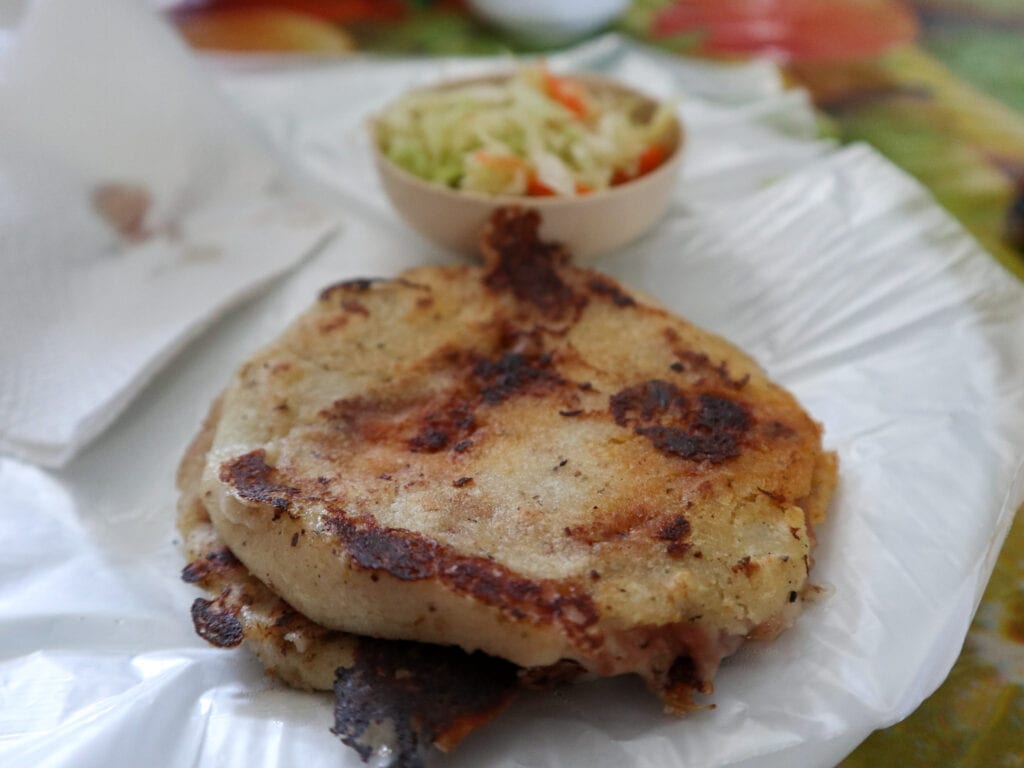
A Note on Gluten Free and Dietary Restrictions
As many of you know, I have celiac disease and have to eat a strictly gluten free diet. So, how did I fare with that at the Juayua Food Festival?
Amazing!
Many of the food stalls are entirely gluten free (by accident, lol). Antojitos Alexander y Camila was especially great because they are 100% gluten free. There’s no wheat flour in their stall as they use entirely corn which was such a treat.
There are quite a few stalls that do have bread, pasta, and battered meats but I just avoided these and chose to only eat at ones that didn’t appear to serve gluten.
I then asked the staff my usual questions in Spanish about gluten and cross contact. I recommend this Latin America gluten free translation card if you don’t speak Spanish.
I will provide more information about eating gluten free at the Juayua Food Festival in my gluten free El Salvador guide – stay tuned for that!
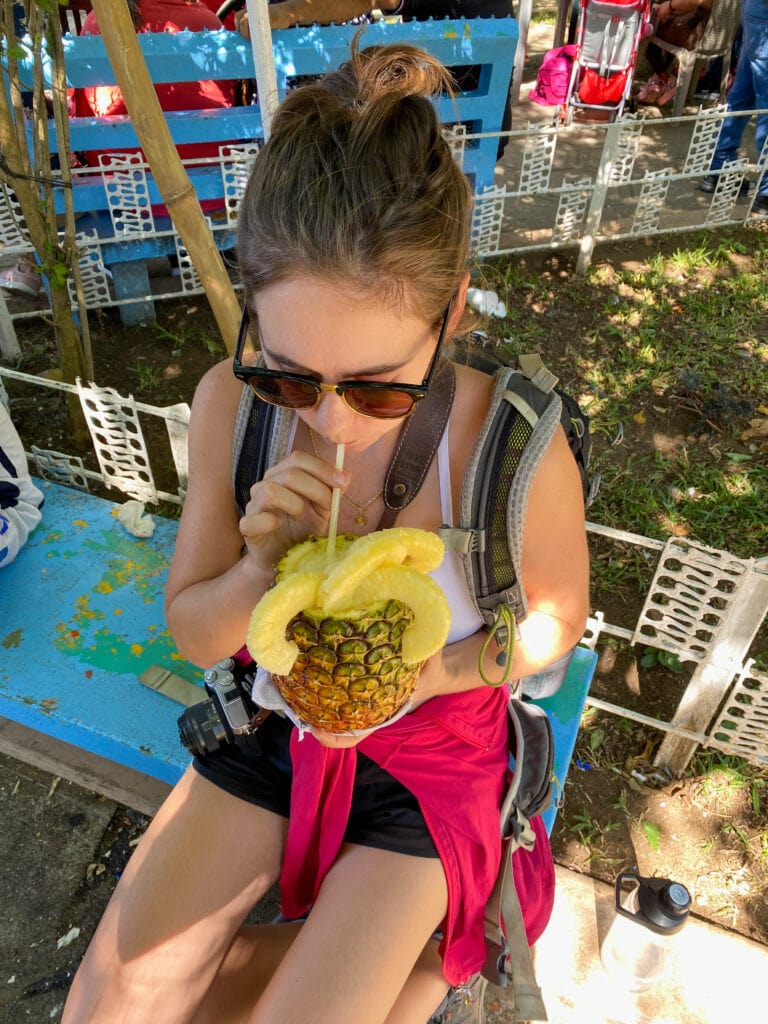
More Things to Do in Juayua El Salvador
There are many other things to do in Juayua besides the food festival! Next to Ataco, this town has some of the most activities along the Ruta de las Flores.
Visit the Christo Negro
Drop by the Iglesia Santa Lucia while you are in Juayua. It is the big church right by plaza central (where the Feria Gastronomica is held) so you can’t miss it.
What’s so special about this church? Well, it’s home to the Christo Negro, or Black Jesus statue, built in the 1500s.
Los Chorros de Calera Waterfall
These epic waterfalls are just a 20 minute walk from central Juayua. However, these days you do need a guide to accompany you here because tourists are targeted for robberies along the road.
You can hire a local guide at your hostel (I recommend dropping by Bourbon Hostel to hire a guide).
Seven Waterfalls Hike
Looking for longer than a 20 minute walk? Alternatively, you can reach Los Chorros de Calera by a longer hiker that takes you past six other waterfalls. The hike takes roughly 6-hours and it does require ropes at certain points. Book with a guide at Bourbon Hostel.
Ride in a Chiva
Chivas are open-air party buses that are popular all over Latin America. Grab a seat on the top deck, drink in hand, and listen to the blasting Latin music as you drive through Juayua.
Bloom Coffee
The Ruta de las Flores is known for its coffee, and my favorite spot to grab a cup in Juayua is Bloom Coffee. The owner, Oscar, is particularly nice and knowledgeable about specialty coffee.
However, if you’ve come to the Ruta de las Flores for coffee, then I recommend you also visit Ataco and Salcoatitán, where the best coffee shops and farms are located!
Explore the Ruta de las Flores
Don’t limit yourself to just Juayua! There is so much more to see along the Ruta de las Flores. My personal favorite towns were Ataco and Apaneca. I absolutely loved the Juayua Food Festival – it was one of my favorite things to do in El Salvador – but I didn’t love the town of Juayua as much as some of the other villages.
Here are some other adventures you can have along the Ruta de las Flores:
- Bathe in hot springs at Santa Teresa Termales
- Hike to the mirador overlooking Ataco
- Tour a coffee farm or factory
- Get lost in a maze
- Ride a bike zipline
- Zoom down the famous rainbow slide
- Take a hiking and cliff jumping tour in El Impossible National Park
- Shop for handicrafts
- Eat even more delicious local foods (my favorite stops, other than the Juayua Food Festival, are Cielito Lindo in Ataco for incredible pupusas and Delicia Anita in Apaneca for a huge range of cheap antojitos)
So, what do you think? Will you be visiting the Juayua Food Festival while in El Salvador? I totally recommend planning your itinerary so you can be in town on the weekend and experience this truly Salvadorean experience.



